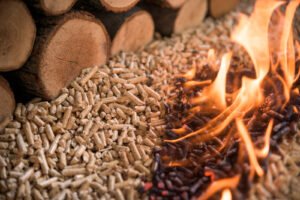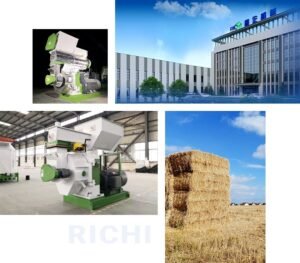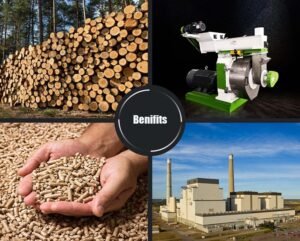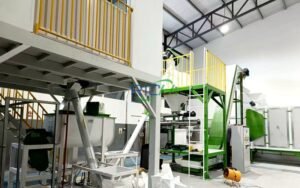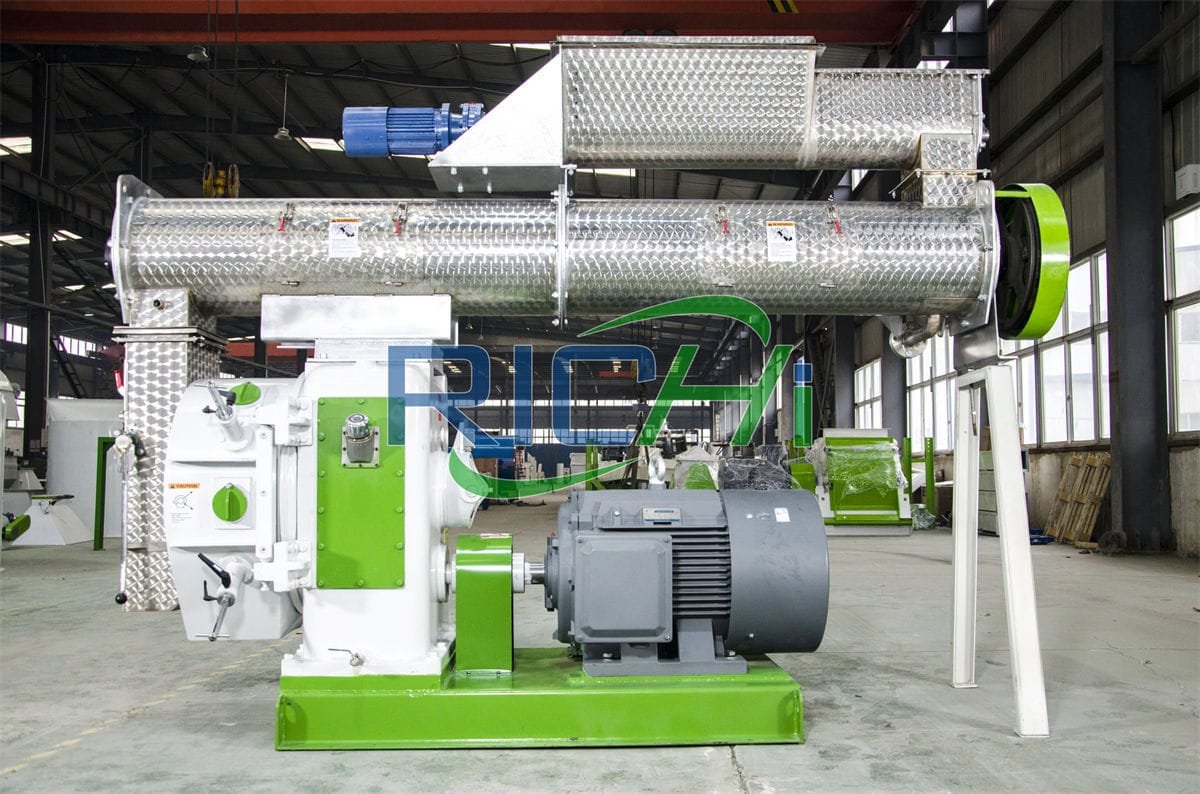
In the ever-evolving landscape of animal feed production, the quest for sustainable and cost-effective solutions has become increasingly paramount. As the global demand for livestock and poultry products continues to rise, the need for efficient and environmentally responsible feed sources has gained significant attention. Enter cassava pellet making machines, innovative equipment designed to transform cassava, a versatile and abundant root crop, into a valuable feed ingredient. These specialized machines offer a promising solution for sustainable animal nutrition, contributing to the growth and resilience of the livestock and poultry industries.
The Significance of Cassava in Animal Feed
Cassava, also known as manioc or yuca, is a starchy root crop widely cultivated in tropical and subtropical regions around the world. While traditionally consumed as a staple food, cassava has emerged as a promising alternative feed ingredient due to its unique properties and potential benefits:
- High Energy Content: Cassava is rich in carbohydrates, providing a concentrated source of energy for livestock and poultry diets.
- Drought Tolerance: Cassava is a hardy crop that can thrive in marginal lands and withstand drought conditions, making it a reliable and resilient feed source.
- Cost-Effectiveness: Compared to traditional feed grains, cassava is often more affordable, particularly in regions where it is locally grown and readily available.
- Versatility: Cassava can be incorporated into various animal feed formulations, including those for ruminants, poultry, and aquaculture, offering flexibility in feed production.
- Environmental Benefits: The cultivation of cassava can contribute to sustainable agriculture practices, as it requires fewer inputs and has a lower environmental footprint compared to some other crops.
The Role of Cassava Pellet Making Machines
Cassava pellet making machines play a crucial role in transforming cassava roots into a convenient and efficient feed ingredient. These specialized machines offer numerous benefits:
- Increased Shelf Life: By compressing and drying cassava into pellets, these machines extend the shelf life of the feed, reducing spoilage and ensuring long-term storage stability.
- Improved Handling and Transportation: Cassava pellets are compact and dense, facilitating efficient handling, transportation, and storage compared to bulky cassava roots or chips.
- Consistent Quality: Advanced cassava pellet making machines incorporate quality control measures to ensure consistent pellet size, density, and nutrient composition, promoting uniform feed quality.
- Efficient Processing: These machines streamline the cassava processing workflow, integrating various stages such as drying, grinding, and pelleting, resulting in increased efficiency and productivity.
- Versatility: Cassava pellet making machines can be configured to produce pellets of varying sizes and densities, catering to the specific requirements of different livestock and poultry species.
- Scalability: These machines are available in various capacities, allowing for scalable operations to meet the growing demand for cassava-based animal feed.
Key Components of Cassava Pellet Making Machines
A successful cassava pellet making machine operation requires the integration of various components to ensure efficient and sustainable production. The key components of a typical cassava pellet making machine include:
- Drying System: Efficient drying systems are essential for reducing the moisture content of cassava roots to optimal levels, ensuring proper pellet formation and long-term storage stability.
- Grinding and Milling: Advanced grinding and milling equipment is necessary to achieve the desired particle size and texture of the cassava material, facilitating efficient pelleting.
- Mixing and Conditioning: Mixing and conditioning systems ensure homogeneous distribution of ingredients and optimal moisture levels, promoting consistent pellet quality.
- Pelleting Unit: The heart of the machine, the pelleting unit compresses and extrudes the cassava material into dense, durable pellets through the application of heat and pressure.
- Cooling and Drying: After pelleting, efficient cooling and drying systems are crucial for stabilizing the pellets and preventing moisture buildup, ensuring long-term storage stability.
- Quality Control and Monitoring: Comprehensive quality control measures, including in-line monitoring systems and laboratory testing, are essential to ensure that the final cassava pellets meet stringent nutritional and safety standards.
- Automation and Process Control: Advanced automation and process control systems are integrated into cassava pellet making machines to ensure consistent product quality, maximize efficiency, and minimize downtime.
- Auxiliary Systems: Cassava pellet making machines also require auxiliary systems such as material handling equipment, dust collection systems, and utilities to ensure efficient and safe operations.
Factors Influencing Cassava Pellet Making Machine Success
The success of a cassava pellet making machine operation is influenced by several critical factors, including:
- Cassava Supply and Quality: Securing a reliable and cost-effective supply of high-quality cassava roots is crucial for consistent pellet production and profitability.
- Formulation Expertise: Employing skilled animal nutritionists and feed formulators is essential to develop balanced and optimized feed formulations incorporating cassava pellets, ensuring optimal animal health and performance.
- Technology and Automation: Investing in advanced technologies and automation systems can enhance production efficiency, reduce labor costs, and improve product quality and consistency.
- Energy Efficiency and Sustainability: Incorporating energy-efficient technologies and sustainable practices, such as waste reduction strategies and renewable energy sources, can reduce operational costs and minimize the environmental impact of the cassava pellet making operation.
- Regulatory Compliance: Ensuring compliance with relevant regulations and standards related to feed safety, quality, and environmental protection is essential for the long-term viability of the cassava pellet making operation.
- Skilled Workforce and Training: Employing a skilled and well-trained workforce is crucial for the efficient operation and maintenance of the cassava pellet making facility, ensuring optimal performance and minimizing human errors.
- Continuous Improvement: Implementing a culture of continuous improvement, including regular equipment upgrades, process refinements, and the adoption of new technologies, can drive long-term efficiency gains and maintain competitiveness in the animal feed market.
Opportunities and Future Outlook
As the global demand for sustainable and cost-effective animal feed solutions continues to rise, the cassava pellet making industry is poised for significant growth, creating numerous opportunities. The future outlook for this sector is promising, driven by factors such as:
- Increasing Demand for Animal Protein: The growing global population and rising demand for meat, dairy, and other animal-based products are expected to drive the expansion of livestock and poultry operations, consequently increasing the demand for high-quality and sustainable feed ingredients like cassava pellets.
- Technological Advancements: Ongoing research and development in areas such as cassava processing, feed formulation, and production processes will contribute to the development of more efficient and innovative cassava pellet making machines and feed products.
- Sustainable Agriculture Practices: The adoption of sustainable agriculture practices, including the cultivation of drought-tolerant and low-input crops like cassava, will become increasingly important in the animal feed industry.
- Precision Animal Nutrition: The integration of precision animal nutrition techniques, including individualized feeding strategies and real-time monitoring, will drive the need for specialized feed formulations incorporating cassava pellets tailored to specific animal requirements.
- International Collaboration and Investment: Increased international collaboration and investment in sustainable animal feed solutions will drive the development of new cassava pellet making facilities, fostering economic growth and technological advancements.
Related post: https://www.richipelletmachine.com/broiler-feed-making-machine/
In conclusion, cassava pellet making machines play a crucial role in unlocking the potential of cassava as a sustainable and cost-effective feed ingredient for the livestock and poultry industries. By investing in these specialized machines and embracing innovative feed solutions, stakeholders can contribute to meeting the rising global demand for animal-based products while promoting sustainable practices and economic development. As the world continues to recognize the importance of efficient and responsible animal production, cassava pellet making machines will remain at the forefront of this vital industry, fueling its growth and driving innovation for a more prosperous and responsible future.
